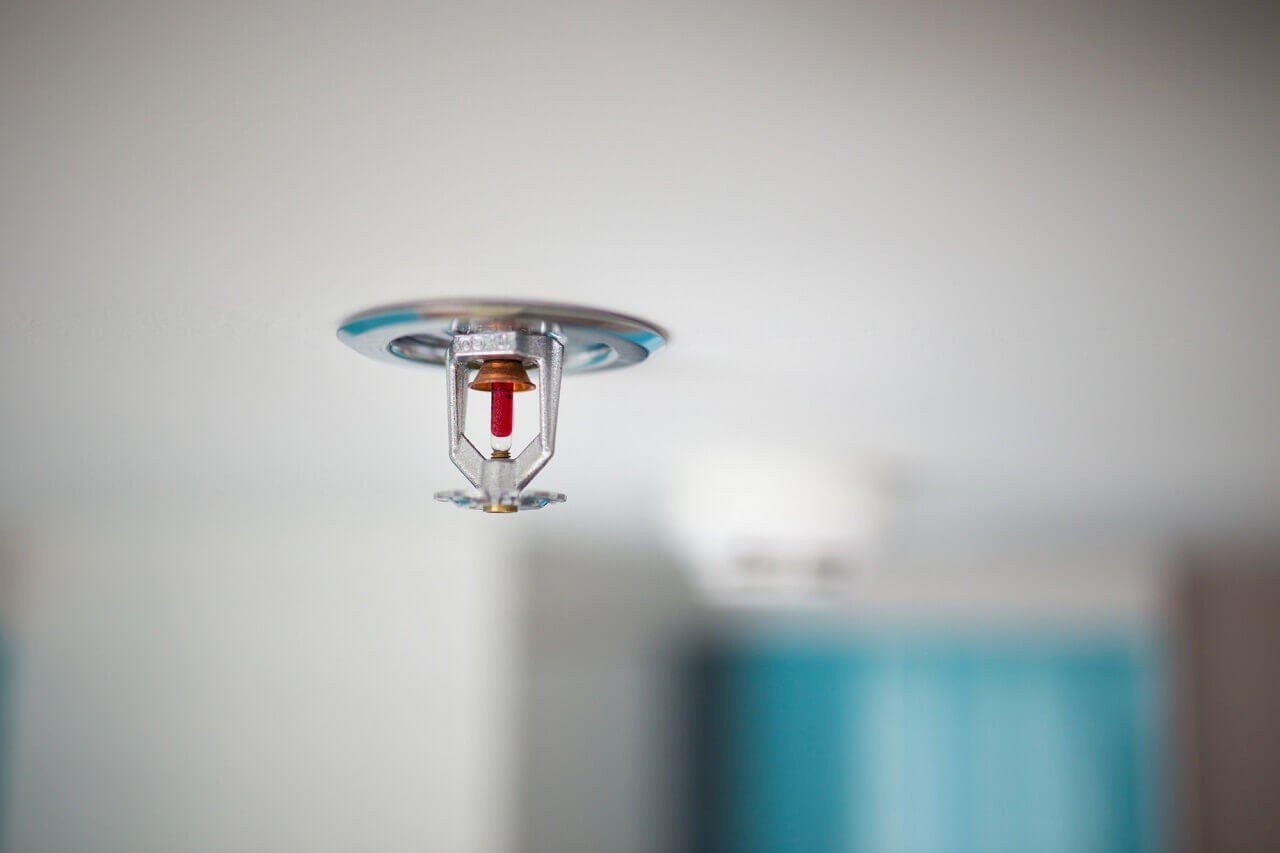Chances are you've looked up in a school, store, or office and noticed a sprinkler head in the ceiling. These tiny, but powerful devices help save lives and prevent fire damage from growing exponentially in dollar value.
Where you probably haven't noticed these sprinklers is inside your home.
In homes, there are over three thousand fire-related deaths per year --deaths that might be preventable with a residential sprinkler system.
Unfortunately, these life-saving systems are not yet mandated by code to be in homes across the United States. While not mandatory, they play an essential role in fire safety, and we want you informed to make the best decision. That's why we're providing the needed background on these systems.
Why Don't More Homes Have Sprinkler Systems?
If you've ever watched a show or movie where a sprinkler system has gone off -- think Hocus Pocus when max lifts the lighter -- it brings to mind a few concerns that stop people from buying homes with them or installing them in their current home.
Many people fear that if one is triggered, the entire system will go off, flooding the home and leading to thousands of dollars in additional damage. Another common fear is that they'll misfire and go off for no reason at all.
What you probably don't know is that these are not accurate depictions or issues with sprinkler systems.
While a system misfire could occur, it's a one in sixteen million chance. However, the odds of having a home fire are just one in three thousand. We don't know about you, but those odds seem worth it.
While movies do showcase an entire building turning on sprinklers at once, that is not the case. The sprinkler system goes off unit-by-unit, only turning on in the rooms that trigger them specifically.
The last common reason people do not want sprinkler systems is financial damage. Sprinklers pump fifteen to twenty gallons per minute to stop the fire from spreading. Water damage amounts to be about $2,200 per room. Firefighters unload 250 gallons per minute, and damage costs are in the realm of an additional $4,500.
What Types of Residential Sprinkler Systems are There?
There are two types of sprinkler systems that you can have installed in your home. Both bring positive and negative aspects with them as well as the plus of protecting your home and family before a fire department can arrive on the scene.
Stand-alone systems don't use the home's water supply. They have their own pipes and backflow valves. Flexible copper or orange-plastic tubing is used for low maintenance. They also require a water storage tank.
The downside to stand-alone sprinkler systems is that the water does not circulate. This can lead to stagnant water being dumped on the fire. These do make it possible for mold and other bacteria to grow in the water.
Multi-use units are the second type. They use the home's plumbing -- from the pipes to the storage. Every time water is used, the water circulates in the pipes. This prevents it from growing stagnant. Some also have a flow alarm that, when activated, will call the fire department and save valuable time.
Multi-use units are common in new construction. They can be retrofitted, but that's typically costly to do.
How Do Residential Sprinkler Systems Work?
Though each system might work a little differently, we wanted to share the basic workings of these units to ease the concern of a misfire in case the statistic didn't.
Almost all systems are heat activated, so it's not the flame itself triggering the water, but the temperature inside the room.
Some systems have a bulb inside the unit with a liquid that expands when heated. Once the liquid reaches a specific temperature, the bulb bursts, and the water flows out. Other units contain links that are soldered together that melt when they get too hot and trigger the system turning on.
Once they do, they pump anywhere from fifteen to twenty gallons per minute to put out the fire. The water will continue to flow as long as water is available, and the system is intact.
Regardless of how it works per sprinkler system, what you should take away is that only extreme temperatures will cause them to go off. This is typically around 160 degrees Fahrenheit.
Costs and Installation
While they aren't mandated in every home country-wide, you can get lucky and find residential sprinkler systems all ready to go in many new construction homes today.
In general, rooms are okay if they have one sprinkler in them. In some larger rooms, such as living rooms or kitchens, installing a second can have positive results in the event of a fire.
In a new construction home, unless it's standard, a plumber will come out to assist. On average, they require a few days to design the system, a month to get the permit to install, and about a week to install the unit. This can be done while other elements of the home are being built.
To install a new stand-alone unit, costs will run about $1 to $1.25 per square foot. Costs for multi-use vary depending on the plumbing be placed.
If your home does not have one, both types can be retrofitted. As with new installs, the cost for multi-use will depend on the plumbing system. For stand-alone, the price is between $5 to $6 per square foot.
Though costly for larger homes, many states offer rebates, and many installers have coupons to help create a safer home.
Is Your Home Fire Safe?
If your home doesn't have a sprinkler system installed, why not? Were you worried about the potential issues many people experience in the movies? Would it be too costly to retrofit your home with either unit type?
Consider scheduling a visit with your plumber to discuss both options for your current home. You might be surprised by both the price and the safety benefits.

